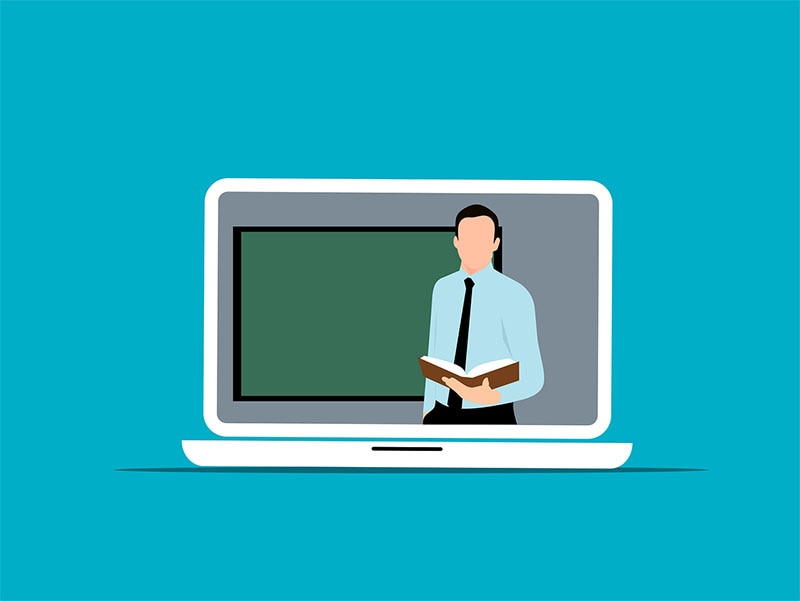This year has been challenging for us teachers and for our students. Due to the pandemic, we are facing until now, all the teachers can't go back to school and teach the students face-to-face, and they need to teach online again. Some schools have announced that they are sticking to online classes again. Thousands of teachers are busy working and preparing their lessons, like creating a presentation for their classes.

This article may help the teachers add some knowledge and skills by improving the quality of their online teaching.
In this article
Prepare recorded lessons
The most common problem of the students is the slow internet connections. They do not understand the lessons you are discussing in the class because of the lag caused by their internet connections. We know the difficulty and struggle with their internet connection, so as teachers, we need to help our students by creating a recorded video or lessons and sending it to them.

The students can watch the video in their own time at any place, especially with the strong signal of the internet. We can also post the recorded video on the school's platforms like Google Classroom or any online classroom provided by the school. Give them at least one day to watch, review or download the video before you delete it for your privacy.
Set up your environment
We cannot avoid noise from outside the house. Find a quiet place or calm place where no one will interrupt you. Turn off any computer notifications like Facebook, Messenger, or Email that might pop up. You don't want your messages or emails that keep popping up on your screen during your recording.

Show yourself, don't be shy
Teachers' presence is important to the students. According to the research, recorded video lessons with a teacher's presence are more effective than simple presentations or slideshows. So, show yourself to the class, and don't be shy. Make sure you have your video of yourself in the presentations or slideshows.
Be natural, be you
It's better not to read your recorded videos. Just talk, speak and act naturally as you do in real classrooms or online classrooms. Memorize and review everything you need to discuss and explain to the class. You can use some notes or outlines to help you focus on the important topics but do not read texts on the presentation or slides, ok?
Don't forget that. And just like I said on the previous topic, stay away from the camera at all times, and this tip will help you, not make the students think you don't know the lesson.
Audio quality is important
Don't forget the video's audio quality to improve the recorded video lesson in your classes. You can ask some people who know how to edit videos like YouTubers or Video editors, and their priority is the audio of their video. Poor audio quality will put your students off quicker than anything else.

Check the sound, the echo, and the background noise of your surroundings to ensure that your students understand the lesson, not the extra noises they hear. Be close to your microphone, but not too close.
Don't forget to check the presentation
Some students don't have money to buy desktops or laptops, so let's think that 50% of your students only have their smartphones or tablet. Make sure you check the presentation on any smartphone or tablet before recording your lessons, so all the text in the presentation is readable on small screens.
The quality of the video on the smartphones or tablets of the students must be good enough for them to view. Double-checked the font sizes, the color, and the template design, to determine if ok or not on smartphones or tablets.
Have a student-teacher interaction
To keep your students engaged in the class, instead of sitting there and listening, you can ask them questions and pause on that presentation or slide to give them time to think about their answers. You can create interactive learning activities using online applications such as quizzes and seatwork. And if you want to add some interactive learning activities, you can find and search them online.

Creating script
After focusing on the technical side, you can add and work from your script. If you are recording your lesson, spend time planning what you want to say in your video. Just like on the previous topic, memorize and review everything you need to discuss and explain to the class.
Try to practice before and after recording your video, double-check and play it back to identify the parts you need to cut or delete. It doesn't matter if you spend a lot of time writing a script or recording a video; what matters is that the output of the recorded video will be good enough for your class.
You can follow my tips, but you can also watch online lessons from others and pick the style, techniques, or suggestions you like and want. Then, integrate them into your next recording.



 100% Security Verified | No Subscription Required | No Malware
100% Security Verified | No Subscription Required | No Malware

